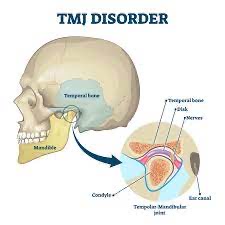
TEMPOROMANDIBULAR JOINT DISORDERS (TMD)
Temporomandibular joint disorders are a complex group of conditions involving thejaw (temporomandibular) joint, chewing (masticatory) muscle and the associated structures of the orofacial region. Temporomandibular joint disordersis a common cause for headaches & facial pain. The signs and symptoms of temporomandibular joint disordersare as listed below,
The signs and symptoms of temporomandibular joint disordersare as listed below,
- Pain around the head and neck muscles,
- Jaw locks
- Jaw Joint sounds
- Jaw pain
- Tiredness/ fatigue in chewing, smiling and taking,
- Ear aches,
- Eye aches,
- Temple headaches,
- Tooth pain;
- Limitations in jaw opening and
- Discomfort in the oral cavity
- Ringing in the ears
- Light headedness or even vertigo
Is temporomandibular joint disorder common?
Yes! TMD are very common and affects more than 10million people in India. It is more predominant in the younger and middle-agedpopulation.Womenbetween 24 to 40 years are more often affected and silently suffer due to its complex set of signs and symtoms. If left undiagnosed and untreated can result in more complex chronic (long term) facial pain.
Can temporomandibular joint disorder be treated effectively?
TMD is a treatable disorder and can be managed effectively when identified and managed by orofacial pain specialist.
Can temporomandibular joint disorder be treated conservatively?
Yes! Conservative treatment modalities are more often adopted as the preferred pathin themanagement oftemporomandibular joint disorders.
Can TMD be associated with other facial pain conditions?
Temporomandibular joint disorders are associated and comorbid with several facial pain conditions especially headaches, migraines, tension type headaches, fibromyalgia, sleep disorders, irritable bowel syndrome and several others.

